Sweet pea Profile
Written by Joy
Nov 05 2020
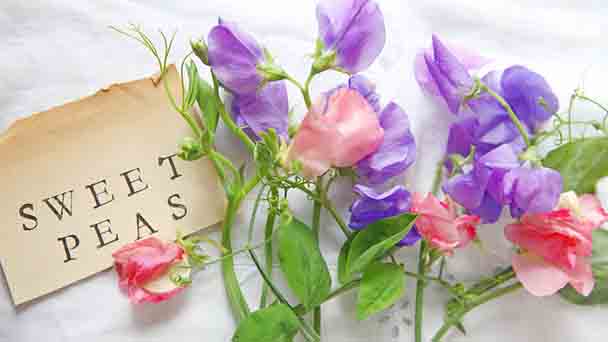
Sweet pea is a one- or two-year-old vine climbing plant, with 2 to 5 flowers. There are many varieties of Sweet peas, usually half-double and double-petaled. The flowers are beautiful, butterfly-shaped, and colorful. They are white, pink, durian, scarlet, blue, violet, and dark brown, and also have spots or Multi-color varieties such as trimming. Sweet peas are native to Sicily and Southern Europe in the Mediterranean and are now widely cultivated as ornamental flowers.
Sweet pea morphological characteristicsSweet pea growth habit and growing environment and distributionSweet pea efficacy and roleGarden uses of sweet peasFlower arrangement of Sweet peasUses of Sweet peasSweet pea cultivation
Sweet pea morphological characteristics
Sweet pea is a perennial herb, with tuberous roots, 1-1.8 meters high. Stems are stout, usually, 5 mm in diameter, terete, longitudinally furrowed, erect or ascending, glabrous. The stipules are large, half-arrow-shaped, slightly serrated all over or below, 4-6 cm long and 2-3.5 cm wide. The leaf shafts of Sweet peas have branched tendrils; 3-4 pairs of small leaves, usually ovate, thinly pointed, broadly wedge-shaped or wedge-shaped at the base, entire, 4-6 cm long, 2-7 cm wide, without both sides Hair, green on the top, pale underneath, with pinnate veins. The racemes are axillary, about as long as the leaves, with more than 10 flowers. The calyx is campanulate, about 5 mm long, glabrous, with short calyx teeth, the smallest calyx tooth is 2 mm long, and the uppermost calyx tooth is 1 mm long. The flower of Sweet pea is dark yellow, 1.5-2 cm long, the flag petal is 1.6-1.8 cm long, the petals are oblate, the petals are narrowly obovate, and the petals are the same length, the wings, and the flag petals are the same length, with ears The keel flap is approximately the same length as the wing flap, with an oval flap, acuminate at the tip, and ears and a linear stem at the base. Its ovary is linear and hairless. The pods are linear, 8-15 cm long and 5-6 mm wide, with long nets. Seeds are purple-brown. Wide and long round, 3-5 mm long, smooth. The flowering period of Sweet peas is from May to July, and the fruit period is from August to September.Sweet pea growth habit and growing environment and distribution
Sweet peas are native to Sicily and Southern Europe in the Mediterranean.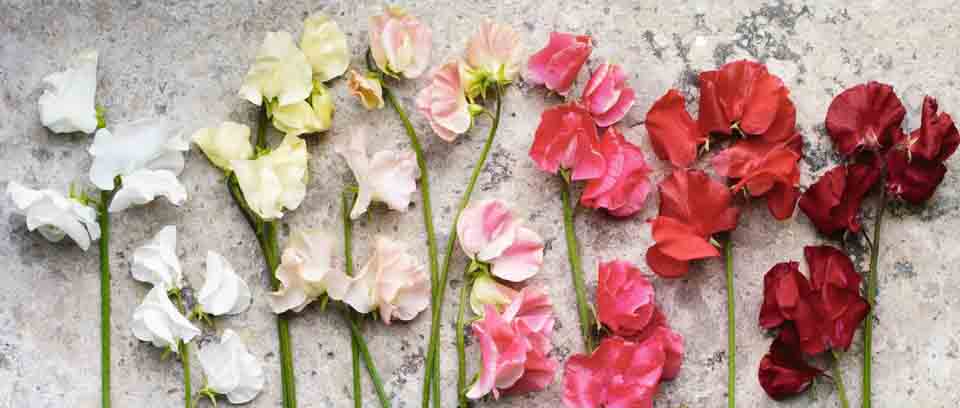
Sweet peas enjoy plenty of sunshine and can tolerate half-shade. Excessive shade causes good plant growth, and the viewing effect is not good in areas with many rainy days during the growing season. Good ventilation is required, and the poor are prone to pests and diseases. It is a deep-rooted flower and requires looseness and fertility. Moist and well-drained sandy loam does not grow well on dry, thin soil and cannot tolerate standing water.
Sweet peas belong to the legume family and are native to Sicily and Southern Europe in the Mediterranean. Sweet peas are distributed in the northern temperate zone, tropical Africa, and high mountains in South America. Because of its strong adaptability, it has a wide geographical distribution all over the world. Sweet pea and its seed pea have been cultivated in my country for more than two thousand years and are cultivated everywhere. The main production areas are Sichuan, Henan, Hubei, Jiangsu, Qinghai and other more than ten provinces.
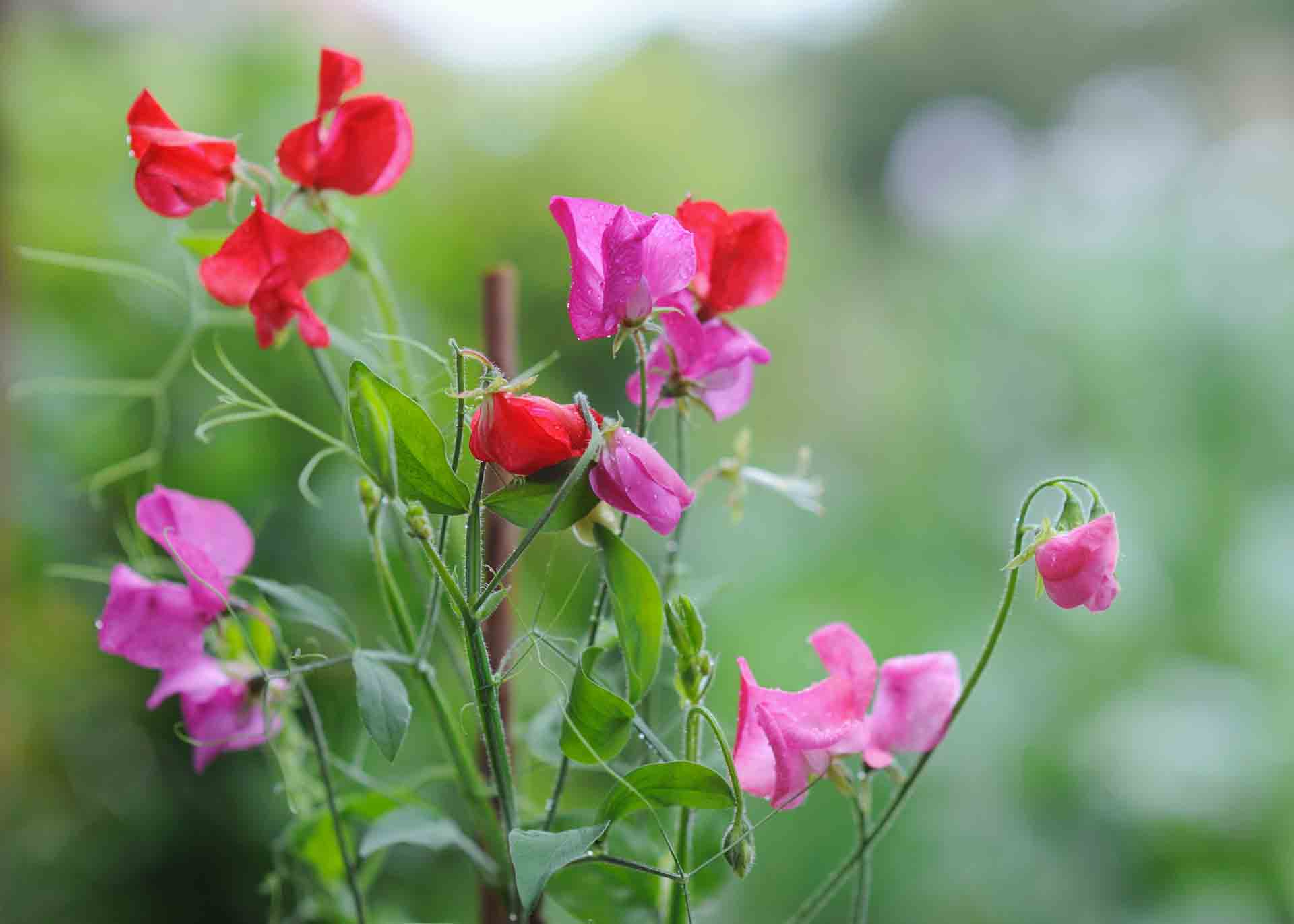
Sweet pea efficacy and role
Garden uses of sweet peas
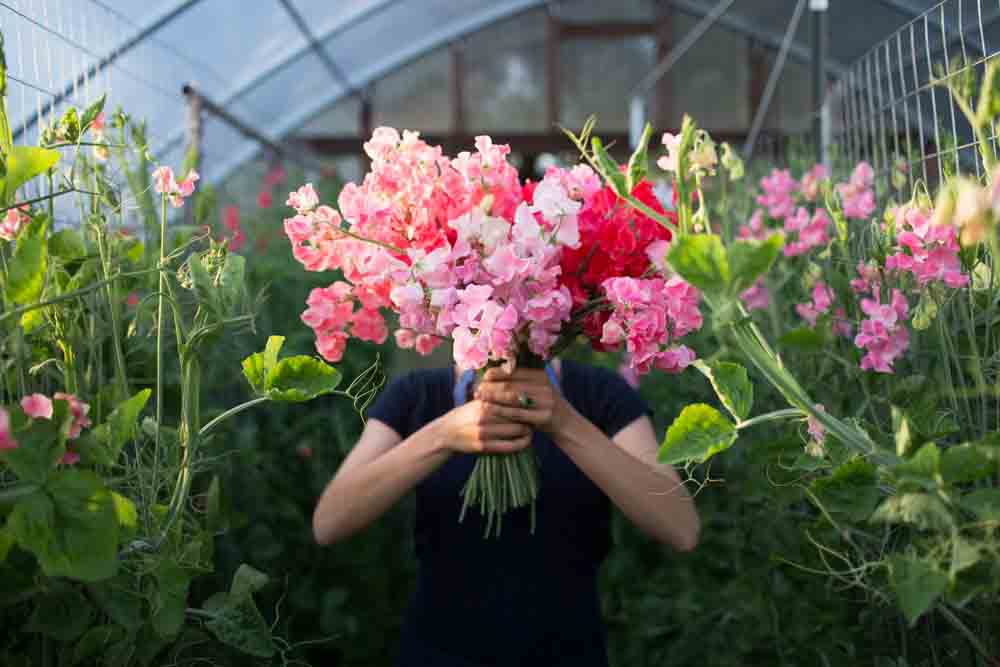
Flower arrangement of Sweet peas
When the flower stem is long, it is only used as a line flower (LineFlower), and when the flower stem is short, it is also suitable for use as a mass flower (MassFlower). It can be combined with tulips and gypsophila to form a small bouquet, which is very charming. It should be noted that the stems of sweet pea are easy to break, so special care should be taken.Uses of Sweet peas
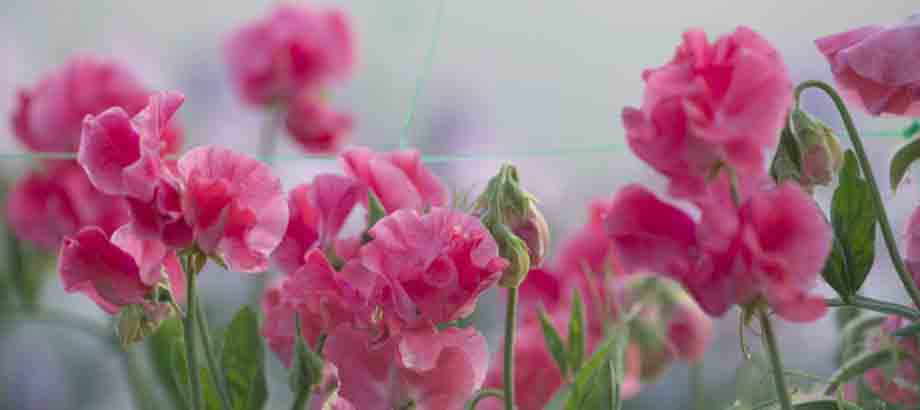
2. Sweet pea is very resistant to the harmful gas hydrogen oxide and can purify the air. In addition, sweet pea is very resistant to sulfur dioxide, so it can be used as a monitoring plant for the gas to help you verify the cleanliness of the air at home, but this is at the expense of a pot of sweet pea.
3. Sweet pea has a unique flower shape with slender and soft branches. It can be used as materials for cutting flowers in winter and spring, making flower baskets, wreaths, and potted plants for indoor furnishings. In spring and summer, it can also be transplanted outdoors to be used as vertical greening materials.
Sweet pea cultivation
Although sweet peas are not strict with soil requirements, they can be planted on well-drained sandy soil or newly cultivated land, but it is better to use loose and neutral (pH 6.0-7.0) soil with high organic content, which is good for seedling emergence and rhizobia When the soil acidity is lower than pH5.5, it is easy to cause disease and reduce the pod setting rate, so lime should be added for improvement. Pea has a deep root system and is slightly drought-tolerant but not moisture-tolerant. It is easy to rot roots due to poor drainage of seeding or seedlings, and poor insemination due to drought during the flowering period, and it is easy to form empty pods or shabby pods.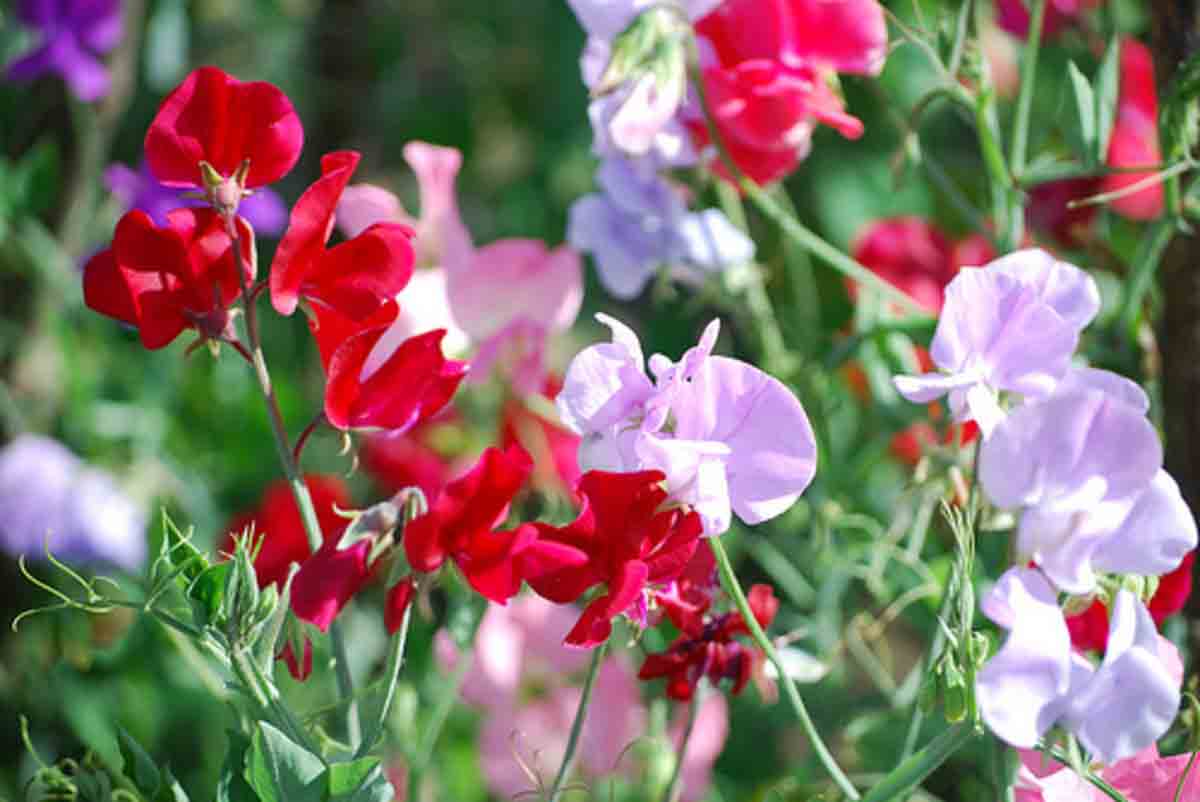
For greenhouse or housing maintenance, potted flowers must be placed in front of the window to receive sunlight, and ventilation must be paid to prevent protruding or falling buds. When the main vine grows to about 20 cm, the topping will promote the growth of the side vine and increase the number of flowers. Climbing-type varieties can be set up in a frame shape, and the flowering period can be controlled by temperature regulation. Plants that bloom from December to February to March of the following year can be maintained in a medium-temperature greenhouse, and plants that bloom in May of the following year can be placed in a cold room for overwintering. During the flowering period, in order to ensure the number of blooms, the blooming flowers are removed at any time to extend the flowering period of the plants. Fruits are set after flowering, and the pods in each part have different hot stages, so they need to be picked as they mature.
Latest Updated
- Benefits of Bugleweed - 7 Science-backed Health Benefits
- Bugleweed Dangers & Side Effects - Is It Poisonous?
- How to Plant Evergreen Trees - What You Should Know
- When to Plant Evergreens - Grow Guide for Evergreen Trees
- 12 Wonderful Evergreen Shrubs for Your Garden
- 12 Popular Evergreen Plants with Pictures for Beginners
- When And How To Prune A Lilac Bush Like a Pro
- How to Grow & Care for Lilac Vine (Hardenbergia Violacea)
- Japanese Lilac Tree (Syringa Reticulata) Care & Propagation Guide
- Shumard Oak Pros and Cons - What to Know
Popular Articles
- Winter maintenance of Antirrhinum Majus
- How to Grow Terminalia Mantaly Tree
- How to Grow and Care for Crossostephium Chinense
- How to grow Antirrhinum Majus in spring
- Peristeria Elata (Dove Orchid) Profile: Info & Care Guide
- Underwatered Snake Plant (Sansevieria Trifasciata) - Signs And How To Fix
- How to Care for Brazilian Jasmine Plant (Mandevilla Sanderi)
- How to Grow & Care for Graptopetalum Purple Delight in Summer
- Rosa Chinensis (China Rose): Plant Growing & Care Tips
- How to Care for Baby Sun Rose (Aptenia Cordifolia)